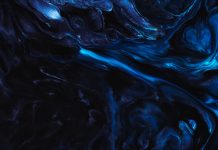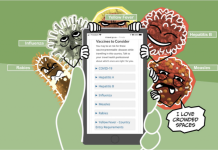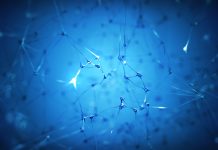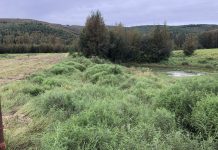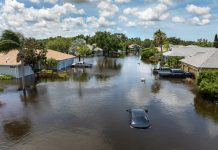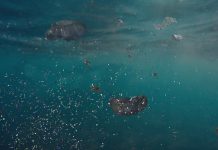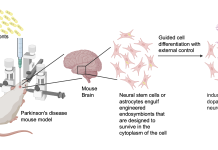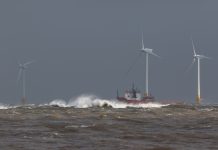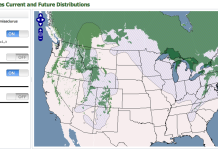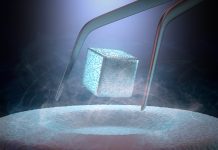Open Access Government produces compelling and informative news, publications, eBooks, and academic research articles for the public and private sector looking at health, diseases & conditions, workplace, research & innovation, digital transformation, government policy, environment, agriculture, energy, transport and more.
Home 2025
Archives
Biochar technology to sequester billions of tons of CO2
This CDR champion industry, biochar, has proven technology that can quickly grow to sequester billions of tons of CO2. However, the industry has growing pains it must overcome to reach its extraordinary potential, James Gaspard, CEO of Biochar Now LLC, reveals.
The microbiome and aging: Unlocking new frontiers in healthy longevity
Research conducted by the USF Microbiomes Institute and the MiaGB Consortium is uncovering the significant link between microbial communities and host biology. This understanding could lead to new therapies for age-related conditions. Shalini Jain, Christian Brechot, and Hariom Yadav provide further insights.
Rethinking the reproductive clock: Can NAD+ preserve fertility?
Recent research indicates that the compound NAD+ offers a promising solution to support fertility and reproductive longevity.
Amino acid nutrition: A vital foundation for canine and feline health
Elizabeth Morris, Ph.D. and Julia Guazzalli Pezzali, DVM, MS, Ph.D., emphasize that amino acid nutrition is a crucial foundation for the health of both dogs and cats.
Teen relevant and open access health information for building vaccine confidence
With the abundance of health information about vaccines online, there is a need for an open educational resource (OER) that empowers youth to understand the importance of vaccines and make informed medical choices.
Role of extracellular electron transfer in the nitrogen cycle
Extracellular electron transfer impacts the nitrogen cycle by enhancing microbial processes and connecting to other biogeochemical cycles. Understanding EET mechanisms provides insights into ecosystem functioning and potential advancements; Arpita Bose and Zhecheng (Robert) Zhang explain.
Impacts of land clearing on areas containing permafrost
Melissa Ward Jones from the University of Alaska Fairbanks explores the impacts of land clearing on areas with permafrost.
Gender stereotypes in technology startups
Professors Tonoyan, Strohmeyer, and Jennings explore how gender stereotypes shape job application intentions in emerging technology startups.
Top team effectiveness and how to develop it
Dr Michael (Mike) Beer, Professor Emeritus from Harvard Business School, explains top team effectiveness and how to develop it.
Climate change, water change and the critical role of community resilience
Dr. Amanda Shankland, Dr. Carolyn Johns, and Gail Krantzberg, explore climate change resilience, water change, and the critical role of climate-ready communities.
Predicting cochlear implant performance: Moving beyond single biomarkers and leveraging artificial intelligence
Matthew Shew, Amit Walia, and Craig A. Buchman highlight that the significant variability in speech perception among cochlear implant users can be addressed by using a multi- faceted approach that incorporates emerging technologies like machine learning and artificial intelligence to improve outcome prediction models.
A novel approach to sampling microplastics
Applied Ocean Sciences is creating a sensor that is faster, more efficient, and less expensive than current sampling methods and will be the first sensor to allow near real-time abundance measurements for microplastics in a water sample.
Neuroengineering with engineered endosymbionts
Christopher H. Contag and Ahmed A. Zarea from Michigan State University’s Institute for Quantitative Health Science and Engineering explore therapeutic approaches to neurodegenerative diseases using a novel strategy based on engineered endosymbionts systems that could revolutionize patient care.
Studying visitors to museums and other learning spaces
Joe E. Heimlich, Ph.D., Sr. Director of Research at COSI and Academy Professor Emeritus at Ohio State University, focuses on studying visitors in museums and other informal and nonformal learning environments.
CRISPR/ Diagnostics: A portable lab for everyone
Professor Kevin J. Zwezdaryk and Chandler H. Monk discuss CRISPR and diagnostics, focusing on the development of a portable lab accessible to everyone.
The new blue: Built-up seascapes create new maritime relations
Four representatives of the research programme, Mistra Co-Creating Better Blue, discuss maritime innovation in the context of a dawning new era for human presence and activities at sea.
The logical reasoning why AI/ML is a hoax and how Inora’s Organic Intelligence Core...
AI suffers from inaccurate, numerically unvalidated calculations which lead to randomly accurate and unreliable results. Accuracy is the deviation from a True Value which Inora Technologies OICT Provides.
Science investigation and engineering design: The seven sectors of stem solutions
Nancy Butler Songer, the Associate Provost of STEM Education at the University of Utah, focuses on science investigations and engineering design relevant to our complex world by identifying the Seven Sectors of STEM Solutions.
The journey of high-temperature superconductors: From discovery to today
John H. Miller, Jr., Professor of Physics at the University of Houston, discusses progress in high-temperature superconductors and its applications.
Living with rare genetic disorders: Challenges of EPP and XLP
Kirstine Juhl Belongie discusses the impact, symptoms, and possible treatments related to EPP and XLP, two debilitating disorders that cause extreme pain following exposure to sunlight.


